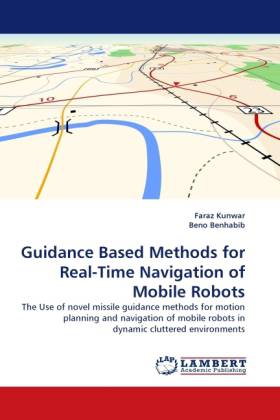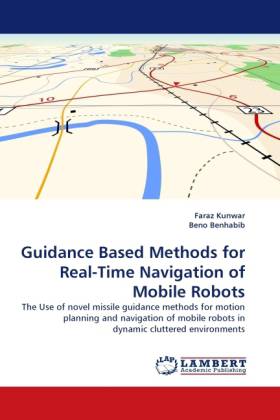
Door een staking bij bpost kan je online bestelling op dit moment iets langer onderweg zijn dan voorzien. Dringend iets nodig? Onze winkels ontvangen jou met open armen!
- Afhalen na 1 uur in een winkel met voorraad
- Gratis thuislevering in België vanaf € 30
- Ruim aanbod met 7 miljoen producten
Door een staking bij bpost kan je online bestelling op dit moment iets langer onderweg zijn dan voorzien. Dringend iets nodig? Onze winkels ontvangen jou met open armen!
- Afhalen na 1 uur in een winkel met voorraad
- Gratis thuislevering in België vanaf € 30
- Ruim aanbod met 7 miljoen producten
Zoeken
Guidance Based Methods for Real-Time Navigation of Mobile Robots
The Use of novel missile guidance methods for motion planning and navigation of mobile robots in dynamic cluttered environments
Faraz Kunwar, Beno Benhabib
Paperback | Engels
€ 67,45
+ 134 punten
Omschrijving
Real-time motion-planning in autonomous vehicle navigation applications has typically referred to the on-line trajectory-planning problem to reach a designated location in minimal time. In this context, past research achievements have been subjected to three main limitations: (i) only the problem of interception (position matching) has been considered, whereas the problem of rendezvous (velocity matching) has not been rigorously investigated; (ii) obstacles have been commonly treated as moving with constant velocity as opposed to being highly maneuverable and following a priori unknown trajectories; and, (iii) mostly, structured indoor terrains have been considered. This book addresses the above drawbacks by proposing the use of guidance-based methods that can be used by an autonomous vehicle to accurately and safely maneuver in the presence of dynamic obstacles on realistic terrains. The objective is time-optimal rendezvous with static or dynamic targets. The proposed methods minimizes rendezvous time and energy consumption, by directly considering the dynamics of the obstacles and the target, while accurately determining a feasible way to travel through an uneven terrain.
Specificaties
Betrokkenen
- Auteur(s):
- Uitgeverij:
Inhoud
- Aantal bladzijden:
- 164
- Taal:
- Engels
Eigenschappen
- Productcode (EAN):
- 9783843374583
- Verschijningsdatum:
- 31/01/2011
- Uitvoering:
- Paperback
- Formaat:
- Trade paperback (VS)
- Afmetingen:
- 152 mm x 229 mm
- Gewicht:
- 249 g

Alleen bij Standaard Boekhandel
+ 134 punten op je klantenkaart van Standaard Boekhandel
Beoordelingen
We publiceren alleen reviews die voldoen aan de voorwaarden voor reviews. Bekijk onze voorwaarden voor reviews.











